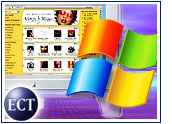
Before the year is out, Apple Computer plans to launch a Windows version of its well-received iTunes Music Store (iTMS). The store’s success thus far — Apple has sold 10 million songs through the Mac-only version — has renewed enthusiasm about the ability of legitimate digital music sellers to make inroads against the Kazaa juggernaut, especially in light of the RIAA’s lawsuit campaign against users of the free file-sharing service.
With iTMS, “Apple offers a very attractive user interface. They have staked their claim on usability, and it shows through here,” IDC senior analyst Susan Kevorkian told the E-Commerce Times.
However, iTunes’ success is not due solely — or even primarily — to its interface. In negotiations with record labels before the service launched last April, Apple CEO Steve Jobs reached an agreement to provide a deep and broad selection of music at a flat rate of 99 cents per song, along with relatively liberal digital rights management (DRM) rules across the board. Apple’s success in those negotiations has positioned it to achieve widespread market share when the Windows version of iTunes launches.
However, iTunes’ success has galvanized other sellers of digital music, which are launching Windows-based services at a quick pace with increasingly favorable usage terms. Most recently, MusicMatch unveiled its own 99-cent-per-song offering. In a sense, the performance of iTunes, coupled with brisk sales of Apple’s iPod portable music player, has acted like a rising tide, lifting all boats.
The potential downside for Apple is that despite plaudits from users and the media, there is no guarantee the company will capitalize on its head start. By the time Roxio releases its legal version of long-dead Napster in December, will Windows users even remember iTunes, or will Apple be relegated to the sidelines?
Once and Future King?
This is not the first time Apple has stood at the forefront of a nascent market. The company’s original Macintosh operating system was the first mainstream OS to use a graphical user interface (GUI), back when Microsoft was still peddling MS-DOS in the 1980s. In a fateful and now-legendary decision, Apple chose not to license its OS to other hardware manufacturers, allowing Microsoft the opportunity to develop a Mac knockoff GUI known as Windows, which now runs on more than 95 percent of all PCs.
Unlike Microsoft, Apple is not primarily a software developer. It designs and manufactures its own hardware. Nevertheless, despite consistent critical and consumer raves about its products, Apple’s market share has hovered around 3 percent of the PC market for several years. At this point, it seems, it would take a herculean effort to achieve significant expansion against Microsoft’s entrenched dominance.
Apple’s foray into the digital music space suggests it is not betting its future simply on its computers and attendant software. But will the company drop the ball again, or will it move quickly to leverage its installed base of Windows iPod users into a Windows foothold for iTunes? If it does, it conceivably could dominate the online music market.
Different Times
Adam Engst, publisher of Mac community newsletter TidBITS, said today’s situation is different from the one Apple faced during the 1980s.
“Licensing the OS would have required that Apple morph from a hardware company into a software company, and considering that the company has always made essentially all of its money on hardware, that would likely have been suicidal, particularly against the Microsoft marketing might,” Engst told the E-Commerce Times.
“In this case,” he added, “opening the iTunes Music Store up to Windows users simply expands Apple’s market without in any way harming the company’s core business in selling Macs. In fact, it even enhances sales of the iPod, which, while not a core business, shows where Apple is heading.”
Engst said he thinks opening up iTMS to Windows users will significantly increase iTunes downloads. Although download percentages likely will not correspond to OS market share (in other words, Mac users still will make up far more than 3 to 5 percent of all iTMS downloads), he said he believes the number of overall downloads (after an initial burst of enthusiasm by Windows users) will increase between three- and five-fold.
Best-of-Breed Advantage
Apple’s main competitive advantage in the online music arena is that it simply has done a better job than everyone else, Engst said. Its store is integrated into one of the best MP3 programs around, rather than being a clumsy Web interface, and the company has established a clear and understandable pricing model.
Bryan Chaffin, publisher of Web site The Mac Observer, agreed that no other music service provider (MSP) has come close to Apple’s ease of use, despite having the business model right there in front of them.
“This is in part because all of the newcomers to the market are relying on Microsoft’s Windows Media (WMA) technology, complete with its more onerous DRM layers,” Chaffin told the E-Commerce Times, contrasting that approach with Apple’s use of the open-standards AAC (Advanced Audio Coding) format.
“Apple is using AAC and its own patented DRM technology called FairPlay, and it just works,” he explained. “Nothing that Microsoft puts out ‘just works,’ and after seeing so much negative coverage in the mainstream media on services like BuyMusic.com, I think Windows users will embrace the iTMS.”
The Windows Challenge
Mike McGuire, research director at GartnerG2, told the E-Commerce Times that going forward, the key to success will be Apple’s ability to replicate its frictionless user interface and transaction model in a Windows environment.
He said content availability is less of a concern, assuming that Apple has negotiated similar — if not identical — licensing terms for the Windows version of iTunes as for the Mac one.
More importantly, Apple’s user interface must be as good on the Windows platform as it is on the Mac, McGuire said. Achieving that goal could be difficult, given that Apple will be acting as a third-party software developer and will not have the same advantages as it does on the Mac when it comes to integrating its software with Windows.
For his part, Chaffin said Microsoft’s ability to build a music store into its OS, much as Apple has done with iTMS on Mac, makes the Redmond, Washington-based software giant Apple’s biggest potential competitor in this space.
“Microsoft might well be able to work around the limitations of its own Windows Media Player technology in ways that BuyMusic.com and other third parties simply can’t,” Chaffin said. “Apple’s biggest challenge is to make sure QuickTime, AAC and iTunes work really well in Windows. Many Windows users have as poor an opinion of QuickTime as Mac users have of Windows Media Player, and that’s because of their respective performance. Apple must ensure that iTunes and the iTMS run transparently on Windows.”
Increased Differentiation
McGuire added that Apple also faces the challenge of taking iTMS to the next level.
He said the company must build its audience through intangibles — services beyond simple transactions. For example, Apple might choose to provide tour information about popular bands, introduce users to new bands, expose users to new music genres and foster a sense of community.
IDC analyst Kevorkian agreed that Apple has a lot of room to differentiate itself from competing MSPs. In addition to the iTunes Music Store’s strong user interface and value, the company can build on the mindshare it has established in the last several months.
Indeed, the company must do so — and it cannot afford delays. Now that all five major record labels are licensing their music across the board, all MSPs have the opportunity to differentiate themselves by offering a host of services that cater to music buyers, including exclusive tracks, concert tie-ins and the ability to provide a combination of a la carte and subscription options, Kevorkian noted.
Proprietary Pitfalls
Still, even as it plans its future expansion, Apple faces a potentially crucial bugaboo that could trip up any planned Windows supremacy: its choice of digital music platform.
“With Apple controlling AAC and FairPlay, it means that the AAC/FairPlay platform itself cannot gain market share from third parties,” Chaffin said. “Effectively, that pits Apple against Microsoft and every vendor of online music and MP3 players combined. While Microsoft controls the Windows Media Player platform, the company is also more than willing to license it out.”
According to Chaffin, that means every MP3 player except the iPod can (and eventually will) play WMA files, while none will play Apple’s FairPlay-controlled AAC files. Meanwhile, the iPod will not be able to play any WMA files that people download from other vendors, such as BuyMusic.com and the upcoming Napster service.
“This isn’t a problem as long as the iPod maintains its market dominance,” Chaffin noted. “If, however, some company were to really beat Apple with a hot new MP3 player that really smashes the iPod but doesn’t play AAC/FairPlay downloads, that could be a huge problem for Apple.
“In other words, Apple’s position as the front-runner in music downloads depends utterly on its ability to offer the best and hottest music player on the market.”
Can the iPod maintain its dominance? Go on to Part 2, “Apple’s War for the Windows Mainstream.”

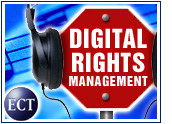
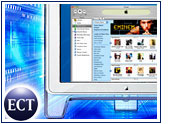





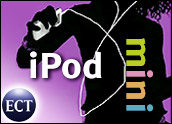

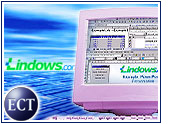

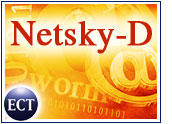

































Just wanted to point out a GLARING ERROR in this Story.
"In a fateful and now-legendary decision, Apple chose not to license its OS to other hardware manufacturers, allowing Microsoft the opportunity to develop a Mac knockoff GUI known as Windows, which now runs on more than 95 percent of all PCs."
That’s TOTALLY WRONG! Whenever I seen mention of some "fateful decision" like that, it makes my blood boil. Journalists completely overlook the FACT that PCs of that Vintage were wholly UNABLE to run a Graphical OS, even if Apple DID want to release the MacOS on PC’s. They were character-based machines, and simply not able to handle bit-mapped graphics. So there was NO "legendary decision", it was nothing like that… It was simply not possible to bring the MacOS over to that low end of hardware without a lot of extra expense. The jury is still out, we’ve got 25 years more before you can really declare a winner in the OS race. Both Bill and Steve are not even 50 years old, personal computers still have a LONG WAY to go before any "standard" will be in place…
I AM afraid you misunderstood my comments. FairPlay is proprietary, and is what drives and controls the iTMS. When it comes to iTMS downloads, the fact that AAC is an open standard and can incorporate other DRM schemes is irrelevant. That is why I specifically called it the AAC/FairPlay platform, and not the AAC platform.
Note, too, that I specifically called AAC an open standard. Because of FairPlay, however, the iTMS is a closed platform (the AAC/FairPlay platform) that is completely controlled by Apple.
In other words, I stand behind my comments as being accurate. Also, note that I wrote some extended comments on the issue in a column yesterday <http://www.macobserver.com/columns/thebackpage/2003/20030929.shtml>.
yes, but your implication was that Apple would have been better off to license the MacOS for use on Intel based machines. There were no graphical based motherboards available in the 80s. Only after years of development was CHRP ready in the middle 90’s. I stand by words, Apple did not make a fateful or "now-legendary decision" in NOT encouraging MacOS clones. Apple chose the best path, and we are all enjoying the benefits of such a smart business decision.
Macdrew, I have no idea where you are getting that. I never once said Apple would have been better off licensing the Mac OS for Intel machines in the 1980s.
However, you are still quite wrong about Apple not having made a decision to license the Mac OS (and Mac hardware). It’s well documented in Owen Linzmayer’s excellent books, The Mac Bathroom Reader and Apple Confidential. This is enormously common knowledge.
Bryan
Editor
The Mac Observer
‘"With Apple controlling AAC and FairPlay, it means that the AAC/FairPlay platform itself cannot gain market share from third parties," Chaffin said. "Effectively, that pits Apple against Microsoft and every vendor of online music and MP3 players combined. While Microsoft controls the Windows Media Player platform, the company is also more than willing to license it out."’
——
Chaffin is completely wrong about who is pushing proprietary technology. Apple is using industry standards and creating open ones where there is none as part of its new direction for the Mac platform.
—
AAC was developed by the Frauhofer Institute (http://www.iis.fraunhofer.de/index.html) and is part of the MPEG-4 a new open industry standard. AAC is the successor to the MP3. Any company that wants to encode Audio content in AAC format can do so. Fairplay is only one of the available DRM one can use as part of AAC as well. (The encoder can choose not to employ any DRM — it’s not required.) Fraunhofer built AAC to be able to accept any number of DRM software. Apple just happened to pick Fairplay. I’m not familiar with fairplay, but I doubt they (Apple) developed it on their own.
—
So actually, Microsoft is battling the standards with its proprietary Windows Media format. You can get AAC encoders and players for most popular platforms for free because the standard is open, and accessible to programmers for any platform.
—
Thanks,
M